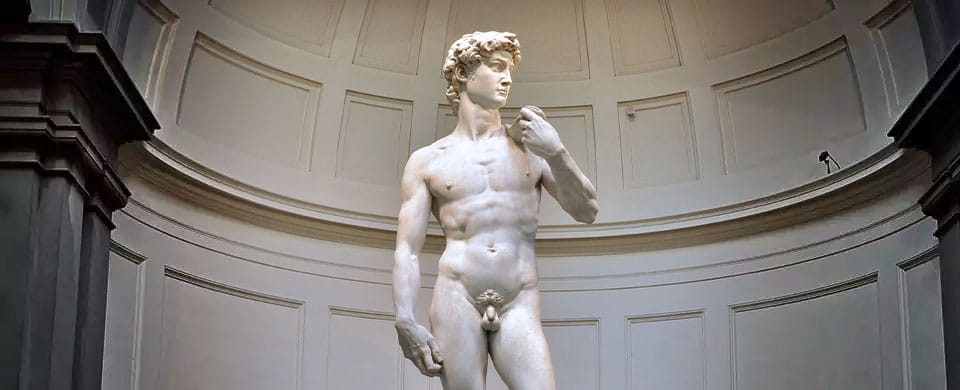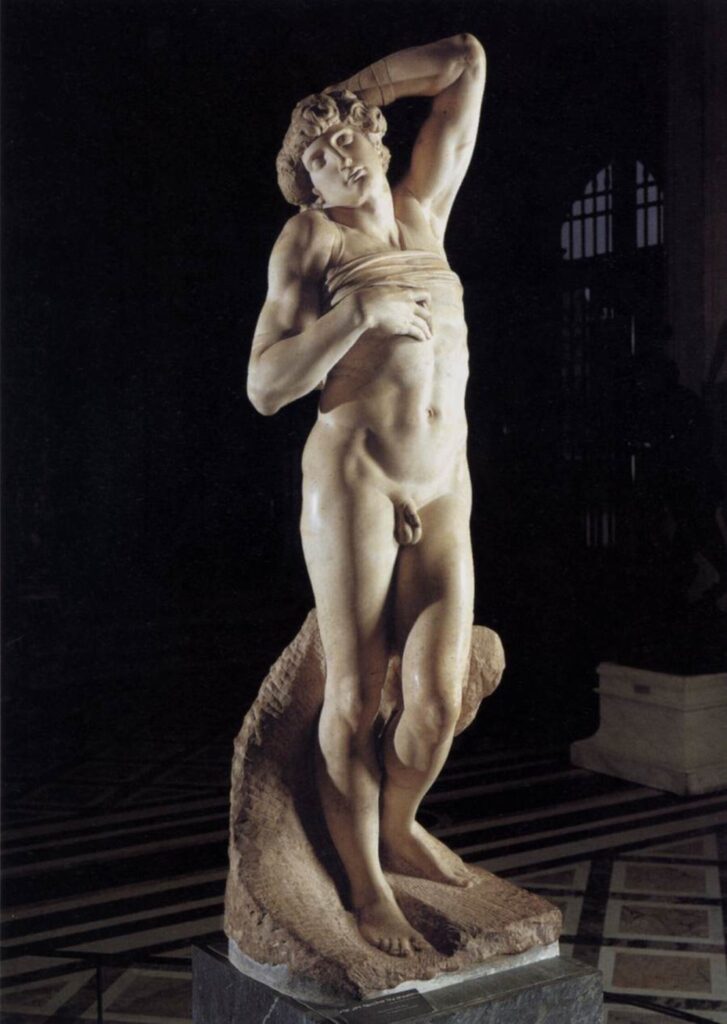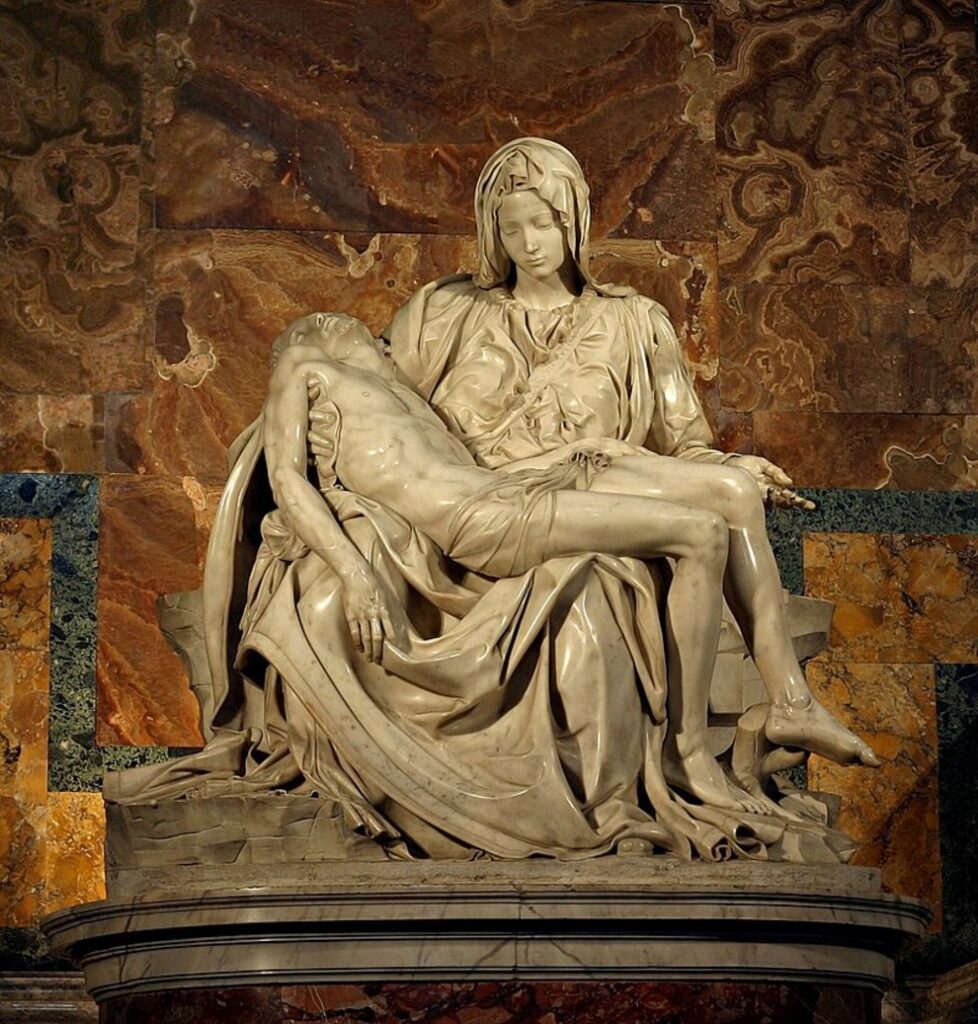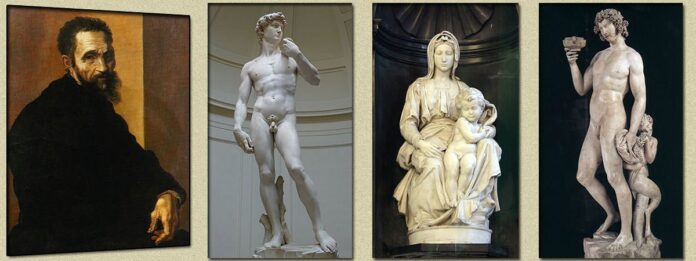Artist, sculptor, architect, and just a genius – Michelangelo Buonarroti is considered one of the greatest people in the history of art.
We have dedicated this article to the three most iconic Michelangelo sculptures.
“David”

Perhaps the world’s most famous five-meter sculpture “David” was created by the artist in just three years.
The story of David and Goliath is one of the most frequently interpreted episodes of the Bible in art. The peculiarity of the sculptures by Michaelangelo is that he became the first artist who did not depict the victorious David after the battle with Goliath but showed him in suspense before the legendary battle.
“David” was in Piazza Della Signoria in Florence for more than 300 years, until in 1873 it was transferred to the Academy of Fine Arts, where it is today. The sculpture is exhibited under a skylight, which was specially designed for it by the 19th-century Italian architect Emilio de Fabris.
Due to its incredible popularity, there are a huge number of copies and casts of the sculpture by Michaelangelo. The most famous of them are located on Signoria Square, in the Italian courtyard of the Pushkin Museum, and in the Albert and Victoria Museum.
Dying Slave

The Dying Slave is one of six Michelangelo sculptures of slave figures that the artist created over the years for Pope Julius II, effectively emptying the papal treasury in an attempt to create the perfect place for himself to begin the afterlife. But the project was never fully realized. This caused great distress to the artist, especially after he personally spent almost a year looking for stone slabs in quarries.
Pieta

“Pieta”, like “David”, is recognized as one of the greatest sculptures by Michelangelo. Originally created for the burial tomb of French Cardinal Jean Bellaire, this sculpture depicts the Virgin Mary holding the body of Christ after he was crucified.
In Italy during the Renaissance, this plot was often used to create funeral monuments. In the VXIII century, Pieta moved to St. Peter’s Basilica.
One of the most notable characteristics of the sculpture is that it is the only work signed by the artist. Over the years of its existence, it has suffered significant damage. One of the sculpture’s most notorious incidents occurred in 1972, when psychopathic Australian geologist Laszlo Toth, imagining himself to be Christ, attacked it with a rock hammer. Today, the restored Pieta is kept behind bulletproof glass.

























